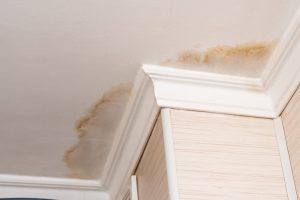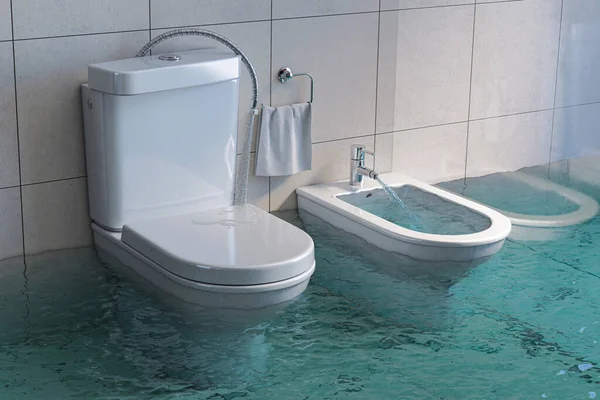Have you been trying to find guidance on How to Repair and Prevent Bathroom Water Damage??

Water damage typically occurs in the shower room due to the water utilized everyday. Occasionally, the damage could be a little mold from the shower. Other times, it's large damages on your flooring. Whatever it is, it is constantly excellent to know the cause and prevent it before it occurs.
This guide will undergo a few of the typical root causes of water damage in the restroom. We will certainly additionally analyze what you can do to stop these causes from damaging your restroom. Let's dive in.
5 Typical Root Causes Of Water Damage in Shower Rooms
These are the usual factors you would certainly have water damage in your washrooms and how you can spot them:
Burst or Leaking Pipes
There are many pipes carrying water to different parts of your restroom. Some pipes take water to the toilet, the sink, the taps, the shower, and numerous other places. They crisscross the small area of the bathroom.
From time to time, these pipes can obtain corroded and also ruptured. Various other times, human activity can create them to leakage. When this takes place, you'll locate water in the edges of your washroom or on the wall surface.
To detect this, look out for bubbling walls, molds, or mildew. Call an expert emergency plumbing to fix this when it happens.
Cracks in your wall tilesv
Washroom wall surface floor tiles have actually been specifically created for that function. They safeguard the wall surface from dampness from individuals taking showers. Nonetheless, they are not undestroyable.
Often, your shower room wall surface ceramic tiles fracture as well as enable some wetness to leak right into the wall surface. This can possibly damage the wall surface if you do not take any type of activity. If you see a split on your wall surface ceramic tiles, fix it immediately. Don't wait until it destroys your wall surface.
Overruning commodes and also sinks
As humans, sometimes we make errors that could create some water damage in the restroom. For instance, leaving your sink tap on can create overruning and also damage to other parts of the restroom with moisture.
Likewise, a defective commode might cause overflowing. For example, a busted commode take care of or various other parts of the tank. When this takes place, it can harm the flooring.
As quickly as you observe an overruning sink or bathroom, call a plumbing professional to aid take care of it promptly.
Roofing system Leaks
Sometimes, the trouble of water damage to the washroom might not come from the washroom. For example, a roof leakage might cause damages to the washroom ceiling. You can identify the damage done by looking at the water stains on the ceiling.
If you locate water stains on your ceiling, check the roof to see if it's damaged. Then, call a specialist to assist resolve the problem.
Excess Moisture
It's amazing to have that lengthy shower as well as splash water while you dance around as well as act like you're performing, however sometimes these acts can create water damage to your washroom.
Sprinkling water around can trigger water to go to corners and also create molds. See just how you spread excess wetness around, and when you do it, clean it up to stop damages.
Final thought
Water damage to your bathroom can be annoying. Nonetheless, you can handle it if you protect against a few of the causes mentioned in this overview. Call a professional emergency plumber if you observe any extreme damage.
How to Repair a Water-Damaged Wall in the Bathroom
All you need to know to repair bathroom wall water damage – from identifying the water source to finishing the repair professionally. If you don’t act quickly to resolve a water damage problem, you could find that it develops into a mold issue and/or cause structural damage to your home. Follow this guide to repair your bathroom before it's too late.
All you need to know to repair bathroom wall water damage
Water damage is a common household problem, and one that, if left unrepaired, can quickly lead to structural problems and health issues. The two most likely rooms where water damage may occur is the bathroom and the kitchen – where water is used often and there is high humidity.
What is water damage?
It is easy to think of water damage as caused by a flood or leaking tap or burst water pipe. However, when water damage is assessed, there are three main categories into which water falls (as classified by the American National Standards Institute). These categories are defined as:
Category 1 Water – ‘Clear Water’
This is sanitary water. There is usually no major threat to health by washing with this water, drinking it, or inhaling if it is streaming. Most water that enters your home will be category 1 water, while most water leaving your home will be either category 2 or 3 water. It may also come from melting snow, rainwater and water tanks.
Damage caused by this type of water can usually be repaired or restored, though this doesn’t mean that there are no potential health issues.
Category 2 Water – ‘Grey Water’
This is contaminated water – sometimes considerably so – and will cause illness if consumed or if it comes into contact with your skin. Water damage in this category is often caused by overflows from toilet bowls, and damage to washing machines and dishwashers. While damaged items might still be repaired or restored after damage by grey water, it is more difficult and more expensive to do so.
If the water damage in your home has been caused by grey water, it is advisable to have repairs made by professionals.
Over time, grey water will deteriorate and become black water.
Category 3 Water – ‘Black Water’
Category 3 water, also known as black water, is highly contaminated and a great risk to health. This may contain raw sewage, heavy metals, and other toxic substances. It will smell terrible.
If this is the water that has caused damage in your bathroom, do not touch it. Stop the water flowing if possible, seal the room and call the experts: it really isn’t worth the risk of ill health and disease that could be fatal. It is very unlikely that items can be repaired or restored if they have been damaged by black water.
https://www.porterscleaning.com/blog/how-to-repair-a-water-damaged-wall-in-the-bathroom/

We were made aware of that editorial on How to Repair and Prevent Bathroom Water Damage? from a friend on our other blog. Sharing is good. Helping people is fun. We cherish reading our article about How to Repair and Prevent Bathroom Water Damage?.
Call
 Sydney Simpson Then & Now!
Sydney Simpson Then & Now! Robbie Rist Then & Now!
Robbie Rist Then & Now! Rachael Leigh Cook Then & Now!
Rachael Leigh Cook Then & Now! Andrew McCarthy Then & Now!
Andrew McCarthy Then & Now! Meadow Walker Then & Now!
Meadow Walker Then & Now!